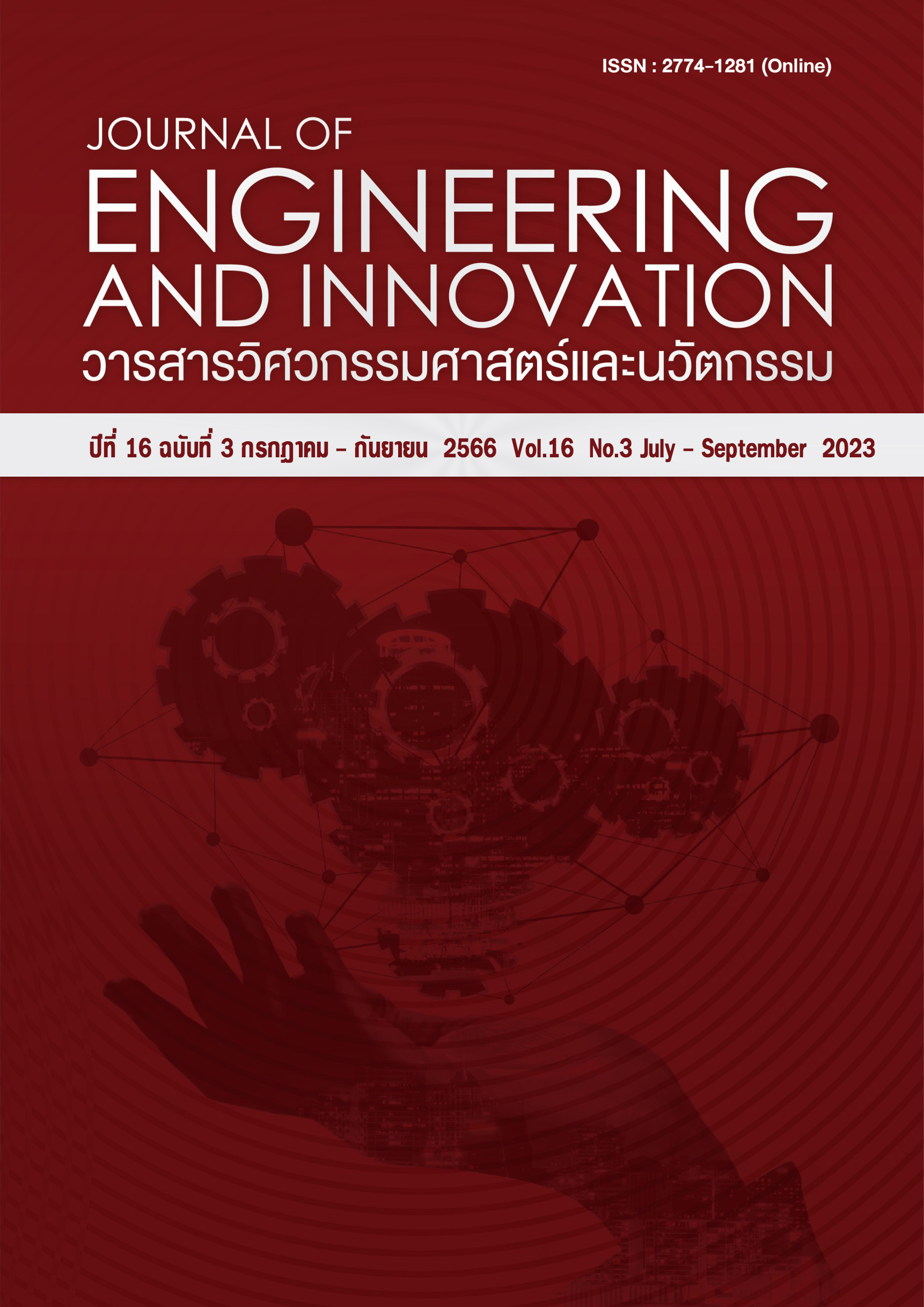Analysis and assessment of flood magnitude and frequency in the Yang River basin
Main Article Content
Abstract
Since the magnitude and frequency of floods are necessary information for planning flood protection and mitigation, the objective of this study was then related to the analysis and assessment of the magnitude and frequency of floods in the frequently flooded downstream areas of the Yang River basin. In this study, the selection of probability distribution functions, namely, Gamma, Lognormal, Generalized Extreme Value, Gumbel, and Weibull distributions, was carried out. The method of maximum likelihood estimation was used to estimate the parameters of the probability distributions based on the annual maximum daily discharge of four selected streamflow stations for the 30-year data series (1990-2019). The goodness-of-fit tests, i.e., the Kolmogorov-Smirnov test and Akaike Information Criterion, were used to evaluate the adequacy of fitting probability distributions to the observed discharge data. The results indicated that the Weibull distribution was better suited amongst other distributions for analyzing and assessing flood magnitude and frequency. The relationships between maximum flood discharges and return periods revealed that the peak flood discharges in the Yang River at the Ban Kut Kwang station (E.70) for return periods of 10, 25, 50 and 100 years were 718.7, 801.4, 853.8, and 900.2 m3/s, respectively. Another example is that the peak flood discharges in the Yang River at Ban Tha Ngam (E.92) for return periods of 10, 25, 50 and 100 years were 713.2, 815.1, 881.0, and 940.2 m3/s, respectively. Considering peak flood discharges for the same return period at the four streamflow stations, it was found that the increase of peak flood discharges varied according to their drainage areas. Moreover, the relationships between drainage areas and peak flood discharges were also developed for estimating discharges at ungauged locations along the main river. In brief, the framework and obtained results from this study will be beneficial for effective flood mitigation and management in the Yang River basin.
Article Details
References
Rao AR, Hamed KH. Flood Frequency Analysis. Boca Raton: CRC Press; 2000.
Calenda G, Mancini CP, Volpi E. Selection of the probabilistic model of extreme floods: The case of the River Tiber in Rome. Journal of Hydrology. 2009; 371(1): 1-11.
Ologhadien I. Comparative evaluation of probability distribution models of flood flow in Lower Niger basin. European Journal of Engineering and Technology Research. 2021; 6(2): 107-117.
Rizwan M, Guo S, Xiong F, Yin J. Evaluation of various probability distributions for deriving design flood featuring right-tail events in Pakistan. Water. 2018; 10(11): 1603.
Romali NS, Yusop Z. Frequency analysis of annual maximum flood for Segamat River. MATEC Web of Conferences. 2017; 103: 04003.
Vivekanandan N. Flood frequency analysis using method of moments and L-moments of probability distributions. Cogent Engineering. 2015; 2: 1018704.
Rahman AS, Rahman A, Zaman MA, Haddad K, Ahsan A, Imteaz M. A study on selection of probability distributions for at-site flood frequency analysis in Australia. Natural Hazards. 2013; 69: 1803-1813.
สำนักงานทรัพยากรน้ำภาค 4 กรมทรัพยากรน้ำ กระทรวงทรัพยากรธรรมชาติและสิ่งแวดล้อม. การบริหารจัดการลุ่มน้ำชี. 2555.
Bedient PB, Huber WC, Vieux BE, Mallidu M. Hydrology and Floodplain Analysis. Upper Saddle River: Pearson Education Limited; 2013.
England JF, Cohn TA, Faber BA, Stedinger JR, Thomas WO, Veilleux AG, Kiang JE, Mason RR. Guidelines for Determining Flood Flow Frequency Bulletin 17C: U.S. Geological Survey Techniques and Methods. 2019.
Grubbs FE. Procedures for detecting outlying observations in samples. Technometrics. 1969; 11: 1-21.
กรมทรัพยากรน้ำ กระทรวงทรัพยากรธรรมชาติและสิ่งแวดล้อม. คู่มือเกณฑ์กำหนดการออกแบบโครงการพัฒนาแหล่งน้ำ. 2550.
Lohpaisankrit W, Prasanchum H. Catchment-scale flood hazard mapping in the lower areas of Lam Pao River basin, Thailand. Engineering Access. 2022; 8: 53-60.
Meeyaem K, Polpinit P. Flood modeling using Gumbel distribution and drainage density for flood forecasting in the Chi River: Amphur Muang, Khon Kaen, Thailand case. In: The 4th KKU International Engineering Conference 2012, KKU-IENC 2012; 10-12 May 2012; Khon Kaen: 2012. p. 99-104.
ชวลิต ชาลีรักษ์ตระกูล, ไตรเทพ บุญครอง. พล็อตความน่าจะเป็นแบบ GEV ของข้อมูลน้ำท่วมรายปีสูงสุดในประเทศไทย. วิศวกรรมสาร ฉบับวิจัยและพัฒนา. 2546. 14(2): 9-18.

